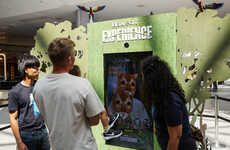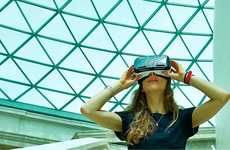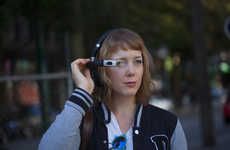
The Seat Back Entertainment on Glasgow Shuttle Buses is Hi-Tech
Alyson Wyers — April 24, 2015 — Autos
References: firstgroup & eurotransportmagazine
While you might be familiar with family friendly televisions in cars or in-flight screens, public transportation in Scotland is taking seat back entertainment to a new level. The Glasgow Shuttle service 500, which has direct 15 minute routes between Glasgow Airport and the city center, introduced augmented reality technology to their seat back screens. This technologically advanced initiative was in honor of an influx of tourists during last summer's Commonwealth Games.
Passengers on the shuttle service can download the First Scotland AR app. Then they simply point either their smartphone or tablet at the vinyl seat back entertainment system in front of them. The "interactive action screen" displays short films about the Games preparation as well as what's going on in the city.
Passengers on the shuttle service can download the First Scotland AR app. Then they simply point either their smartphone or tablet at the vinyl seat back entertainment system in front of them. The "interactive action screen" displays short films about the Games preparation as well as what's going on in the city.
Trend Themes
1. Augmented Reality Entertainment - Augmented reality technology is disrupting the entertainment industry with multiple opportunities for interactive displays in public spaces.
2. Interactive Public Transportation Displays - The use of interactive displays in public transportation can improve passenger experiences and offer an innovative advertising platform for brands.
3. AR Tourism Initiatives - More tourism-focused businesses and attractions can leverage augmented reality technology to create interactive experiences that drive visitor engagement and repeat business.
Industry Implications
1. Public Transport - Public transportation companies can explore the use of augmented reality technology to transform their in-vehicle displays, improving the rider experience and offering new advertising opportunities.
2. Tourism - The tourism industry can utilize augmented reality to create immersive and interactive experiences for travelers, enhancing engagement with destinations and creating new revenue streams.
3. Entertainment - The entertainment industry can use augmented reality to create unique and interactive experiences for audiences, further disrupting traditional media channels and formats.
1.7
Score
Popularity
Activity
Freshness























